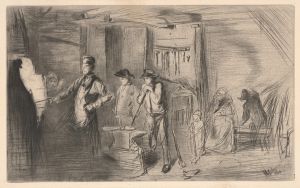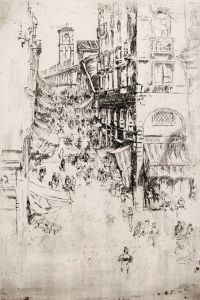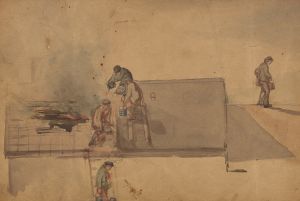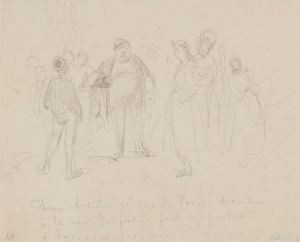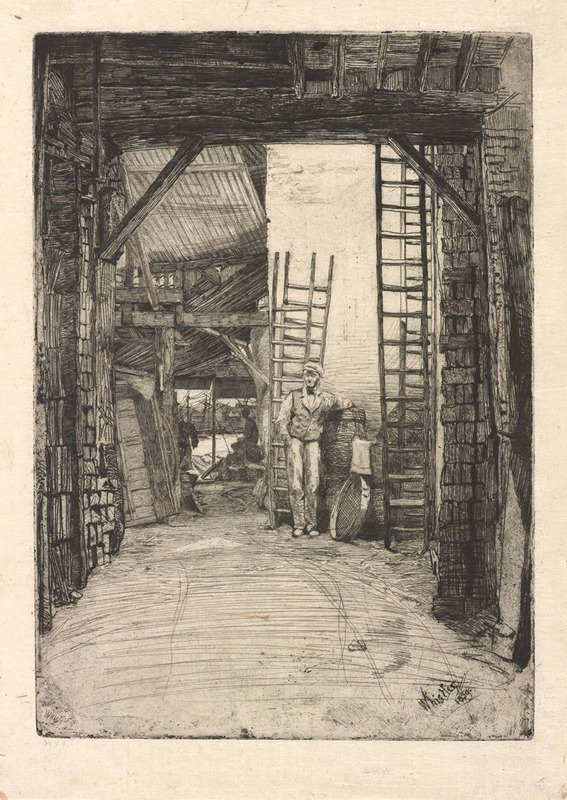
The Lime-Burner
A hand-painted replica of James Abbott McNeill Whistler’s masterpiece The Lime-Burner, meticulously crafted by professional artists to capture the true essence of the original. Each piece is created with museum-quality canvas and rare mineral pigments, carefully painted by experienced artists with delicate brushstrokes and rich, layered colors to perfectly recreate the texture of the original artwork. Unlike machine-printed reproductions, this hand-painted version brings the painting to life, infused with the artist’s emotions and skill in every stroke. Whether for personal collection or home decoration, it instantly elevates the artistic atmosphere of any space.
"The Lime-Burner" is a painting by the American artist James Abbott McNeill Whistler, created in 1859. Whistler, who was born in Lowell, Massachusetts, in 1834, is known for his innovative and influential contributions to the art world, particularly in the realms of portraiture and landscape painting. He spent much of his career in Europe, where he became associated with the Aesthetic Movement, which emphasized the visual and sensual qualities of art over its narrative content.
"The Lime-Burner" is part of Whistler's "Six Projects," a series of works that depict the industrial and working-class life along the Thames River in London. This painting specifically portrays a lime-burner, a worker involved in the production of lime by burning limestone, a common practice during the 19th century for construction and agricultural purposes. The setting is a lime kiln, an industrial site where limestone is heated to produce quicklime.
In "The Lime-Burner," Whistler captures the gritty reality of the worker's environment with a keen eye for detail and atmosphere. The composition centers on the figure of the lime-burner, who is depicted in a moment of rest or contemplation amidst the tools and materials of his trade. The background features the industrial landscape of the Thames, with its smokestacks and warehouses, providing a stark contrast to the human element in the foreground.
Whistler's use of color and light in this painting is notable. He employs a muted palette dominated by earthy tones, which enhances the somber and realistic mood of the scene. The artist's brushwork is both precise and expressive, capturing the textures of the lime, the worker's clothing, and the surrounding environment. This attention to detail reflects Whistler's commitment to portraying the everyday lives of ordinary people with dignity and respect.
"The Lime-Burner" is significant not only for its subject matter but also for its place within Whistler's broader body of work. It exemplifies his interest in the interplay between light and shadow, as well as his ability to convey a sense of place and atmosphere. The painting also reflects the influence of Realism, a movement that sought to depict contemporary life with honesty and accuracy, which was gaining prominence in the mid-19th century.
Whistler's "Six Projects" series, including "The Lime-Burner," was well-received by critics and the public alike. These works helped establish his reputation as a serious artist capable of tackling diverse subjects with skill and sensitivity. Over time, Whistler's contributions to art have been recognized as pivotal in the transition from traditional to modernist approaches in painting.
Today, "The Lime-Burner" is held in the collection of the Freer Gallery of Art in Washington, D.C., which houses an extensive collection of Whistler's works. The painting continues to be appreciated for its historical significance and artistic merit, offering viewers a glimpse into the industrial life of 19th-century London through the eyes of one of America's most celebrated artists.









